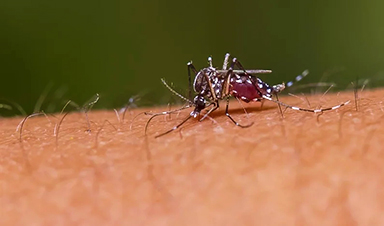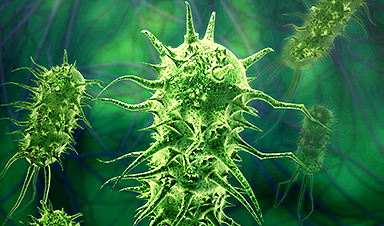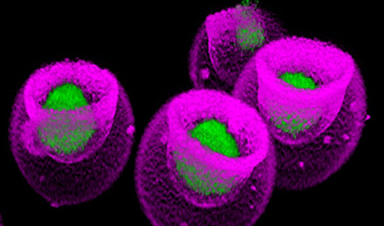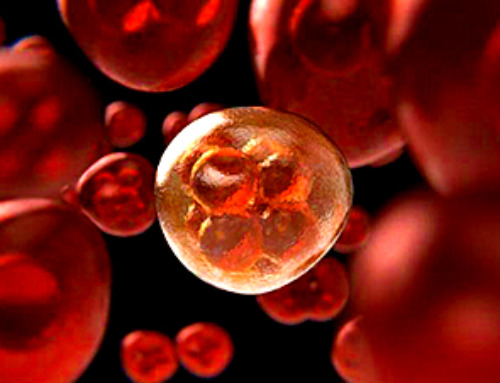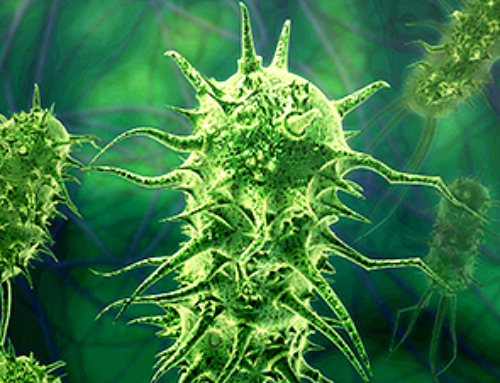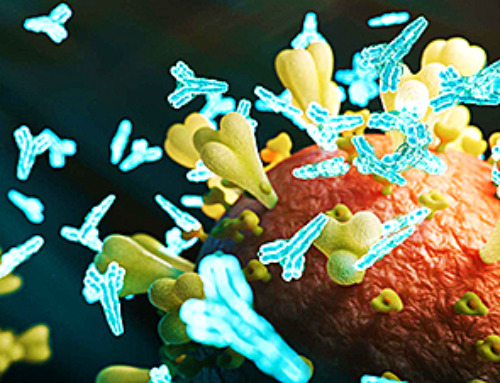AZoNano speaks with Dr. Laurene Tetard from the University of Central Florida about her upcoming research into the development of nanotechnology that can detect animal-borne diseases. The hope is that such technology can be used to help rapidly control infected mosquito populations to protect public health.
What inspired your new project that will be using nanotechnology to detect animal-borne diseases?
The idea stemmed from one of the group discussions that took place during the Scialog conference on Mitigating Zoonotic Threats. During the discussion, my now-collaborator on this project, Dr. McGregor, described her work on surveillance of mosquitoes and the painstaking steps involved in detecting infected mosquitoes.
When it comes to the surveillance of larger animals, such as cattle, a monitoring device on their collar can be used to detect changes in displacement; this is not the case for smaller animals such as mosquitoes or ticks.
There is a honey-baited card that is used in mosquito traps to collect potential pathogens from mosquitoes’ saliva. However, all cards (infected or not) have to be collected from the traps and analyzed with tedious techniques. These costly protocols can hinder the deployment of good surveillance programs in the US.
On the other hand, sensors using nanoparticles to indicate the presence of a pathogen by a color change have been implemented for many other applications. Being able to transition this nanotechnology to make the detection of pathogens in mosquitoes possible seems like an impactful idea that we are excited to pursue.
Could you give an overview of what zoonotic threats are?
Zoonotic threats are viruses, bacteria, parasites and fungi that originally live in animals but can spill over to humans and cause serious illnesses. Malaria, rabies, Lyme disease, Ebola or Zika viruses are zoonotic diseases transmitted from animals.
It is expected that climate change will lead to more and more perturbations of the local environments in which animals live, which could promote more “unknown” pathogens to become dangerous for humans. Thus, it is important to find ways to make use of state-of-the-art imaging and sensing tools to enable the discovery and detection of new potential zoonotic threats.
This is especially important because these new pathogens cannot always be grown in the lab. For this reason, nanoscale tools that are capable of getting information from a single cell at a time can be particularly important in this field of research.
As a result of the COVID-19 pandemic, most people are now aware of SARS-CoV-2 – the virus that causes COVID-19. What is the source of this virus?
The origin of the virus is still under debate, of course. But experts in zoonotic diseases predict that new pathogens can spill over from many animals in the future, including but not limited to rats, mosquitoes, bats, ticks and more. It is important to prepare for these events. Discussions facilitated by the Scialog conference have highlighted some of the needs to support the discovery, detection, identification and surveillance of zoonotic threats.
For this project, you have been awarded a $50,000 grant. What do you intend on using this grant for?
Our award will allow Dr. McGregor and my group to evaluate how nanoparticle-based sensors can be used to detect pathogens in mosquitoes. We are considering a few nanoparticle-based platforms to do this.
We are also working with collaborators at UCF who have the expertise to tune the properties of nanoparticles for the needs of this project. We hope to be able to demonstrate the proof-of-concept of our idea this year and test it on a real mosquito disease in Dr. McGregor’s lab at the USDA-ARS.
As a part of the new initiative, what will you be examining?
We will be examining the color changes obtained with various nanoparticles. Our aim is to obtain a color change that could be clearly identified by workers without the need for expensive equipment. We will consider color changes under the sun (visible light) or dark light. We will also evaluate implementing this technology into a system similar to the honey-baited card that is currently used in mosquito traps.
At present, the process of tracking potential threats from animals – particularly mosquitos – is laborious. Why do you think this is?
Mosquitoes are small, and their displacements are difficult to predict. Detecting the pathogens will require the mosquitoes to reach the sensing platform. In addition, there could be different populations of mosquitoes living in the same area. Due to this, traps have to be set up to gather enough mosquitoes in a confined space and collect their saliva for analysis.
Saliva is important because it contains pathogens when the mosquito is infected. But the amount of saliva collected during each feeding of a mosquito is relatively small, hence limiting the tools that can be used to fingerprint the potential pathogens. This is a very challenging problem.
There is a huge gap between the state-of-the-art technology being developed in nanotechnology and the technology currently available for tracking potential threats from animals. What is missing from the current technology available to track potential zoonotic threats?
Many researchers interested in developing highly sensitive and selective sensors have more of an engineering or physical science background. Many times, the early developments of new sensors involve using a “model analyte” to demonstrate the sensor’s performance. In cases where the team explores applications for their new platform, most studies are geared toward human diseases and environmental applications. The field of zoonotic threats is mostly uncharted in this respect.
The same is true for nanoscale imaging and spectroscopy. The tools are capable of revealing the structure and composition of pathogens, including viruses. They can also be used to study the interaction of various chemicals with these pathogens. But most studies have focused on human pathogens, not zoonotic pathogens.
Maybe the main message here is that experts in zoonotic threats should try to educate scientists with expertise on the outstanding need for smart sensors, imaging and spectroscopy for the detection of potential future threats. I think this will foster many new ideas as it did during the Scialog meeting.
How do you intend to create an active material that will change color if pathogens are present?
We will first focus on the color-change issue. This will be done with well-established nanoparticles which will be adapted for this application. Next, we will look for ways to develop gels that will entice mosquitoes with a sugary substance to collect their saliva and trigger the color change in the presence of the pathogen.
What impact will such an innovative material have on pathogen examinations?
Our technology will make it possible to speed up the identification of pathogen-infected mosquito traps in the field.
The pathogen examination will still require more advanced analyses for confirmation.
However, with this technology, only cards that exhibit color change will have to be analyzed. This will significantly reduce the costs and time spent on analyses. Over time, we envision developing technologies with different levels of specificity for pathogens, but this will require more time.
Have you anticipated any challenges that you may encounter during your research, and if so, how did you intend to overcome them?
We anticipate that many design iterations and optimization will be required to reach a field-effective solution with suitable color contrast and low false positive/negative counts. There are ways to address these issues, and we will work with experts in their respective fields to get the best ideas to deliver this product in a reasonable timeframe.
What do you hope this project will help achieve in terms of new treatments of zoonotic viruses?
This project is intended to improve the surveillance of mosquitoes.
Maybe your readers remember the propagation of the Zika virus in the US several years ago and the importance of rapidly controlling the infected mosquito populations to protect the public. We hope that our technology will help in such events, but also in routine monitoring by local authorities.
Of course, becoming more educated on the challenges of zoonotic diseases may also lead to new ideas that will impact the field in other ways.
About Dr. Laurene Tetard
Dr. Tetard received her Ph.D. in Physics from the University of Tennessee, Knoxville, TN, in 2010. She spent two years (2011-2013) as Eugene P. Wigner Fellow and Research Staff in Oak Ridge National Laboratory, Oak Ridge, TN, before joining UCF in 2013 where she is an Associate Professor and currently the Department Associate Chair. She is a Scialog awardee (2021) and NSF CAREER Awardee (2019). Her research focuses on the development of high-resolution microscopy and spectroscopy tools to advance the fundamental understanding of complex systems based on morphological, subsurface, physical and chemical properties at the nanoscale.
News
Scientists study lipids cell by cell, making new cancer research possible
Imagine being able to look inside a single cancer cell and see how it communicates with its neighbors. Scientists are celebrating a new technique that lets them study the fatty contents of cancer cells, [...]
Antibiotic Breakthrough: Revolutionary Chinese Study Paves Way for Superbug Defeating Drugs
New research reveals that fluorous lipopetides act as highly effective antibiotics. Bacterial infections resistant to multiple drugs, which no existing antibiotics can treat, represent a significant worldwide challenge. A research group from China has [...]
Signs of Multiple Sclerosis Show Up in Blood Years Before Symptoms Appear
UCSF scientists clear a potential path toward earlier treatment for a disease that affects nearly 1,000,000 people in the United States. By Levi Gadye In a discovery that could hasten treatment for patients with multiple [...]
Advanced RNA Sequencing Reveals the Drivers of New COVID Variants
A study reveals that a new sequencing technique, tARC-seq, can accurately track mutations in SARS-CoV-2, providing insights into the rapid evolution and variant development of the virus. The SARS-CoV-2 virus that causes COVID has the unsettling [...]
No More Endless Boosters? Scientists Develop One-for-All Virus Vaccine
End of the line for endless boosters? Researchers at UC Riverside have developed a new vaccine approach using RNA that is effective against any strain of a virus and can be used safely even by babies or the immunocompromised. Every [...]
How Are Hydrogels Shaping the Future of Biomedicine?
Hydrogels have gained widespread recognition and utilization in biomedical engineering, with their applications dating back to the 1960s when they were first used in contact lens production. Hydrogels are distinguished from other biomaterials in [...]
Nanovials method for immune cell screening uncovers receptors that target prostate cancer
A recent UCLA study demonstrates a new process for screening T cells, part of the body's natural defenses, for characteristics vital to the success of cell-based treatments. The method filters T cells based on [...]
New Research Reveals That Your Sense of Smell May Be Smarter Than You Think
A new study published in the Journal of Neuroscience indicates that the sense of smell is significantly influenced by cues from other senses, whereas the senses of sight and hearing are much less affected. A popular [...]
Deadly bacteria show thirst for human blood: the phenomenon of bacterial vampirism
Some of the world's deadliest bacteria seek out and feed on human blood, a newly-discovered phenomenon researchers are calling "bacterial vampirism." A team led by Washington State University researchers has found the bacteria are [...]
Organ Architects: The Remarkable Cells Shaping Our Development
Finding your way through the winding streets of certain cities can be a real challenge without a map. To orient ourselves, we rely on a variety of information, including digital maps on our phones, [...]
Novel hydrogel removes microplastics from water
Microplastics pose a great threat to human health. These tiny plastic debris can enter our bodies through the water we drink and increase the risk of illnesses. They are also an environmental hazard; found [...]
Researchers Discover New Origin of Deep Brain Waves
Understanding hippocampal activity could improve sleep and cognition therapies. Researchers from the University of California, Irvine’s biomedical engineering department have discovered a new origin for two essential brain waves—slow waves and sleep spindles—that are critical for [...]
The Lifelong Cost of Surviving COVID: Scientists Uncover Long-Term Effects
Many of the individuals released to long-term acute care facilities suffered from conditions that lasted for over a year. Researchers at UC San Francisco studied COVID-19 patients in the United States who survived some of the longest and [...]
Previously Unknown Rogue Immune Key to Chronic Viral Infections Discovered
Scientists discovered a previously unidentified rogue immune cell linked to poor antibody responses in chronic viral infections. Australian researchers have discovered a previously unknown rogue immune cell that can cause poor antibody responses in [...]
Nature’s Betrayal: Unmasking Lead Lurking in Herbal Medicine
A case of lead poisoning due to Ayurvedic medicine use demonstrates the importance of patient history in diagnosis and the need for public health collaboration to prevent similar risks. An article in CMAJ (Canadian Medical Association [...]
Frozen in Time: How a DNA Anomaly Misled Scientists for Centuries
An enormous meteor spelled doom for most dinosaurs 65 million years ago. But not all. In the aftermath of the extinction event, birds — technically dinosaurs themselves — flourished. Scientists have spent centuries trying [...]
